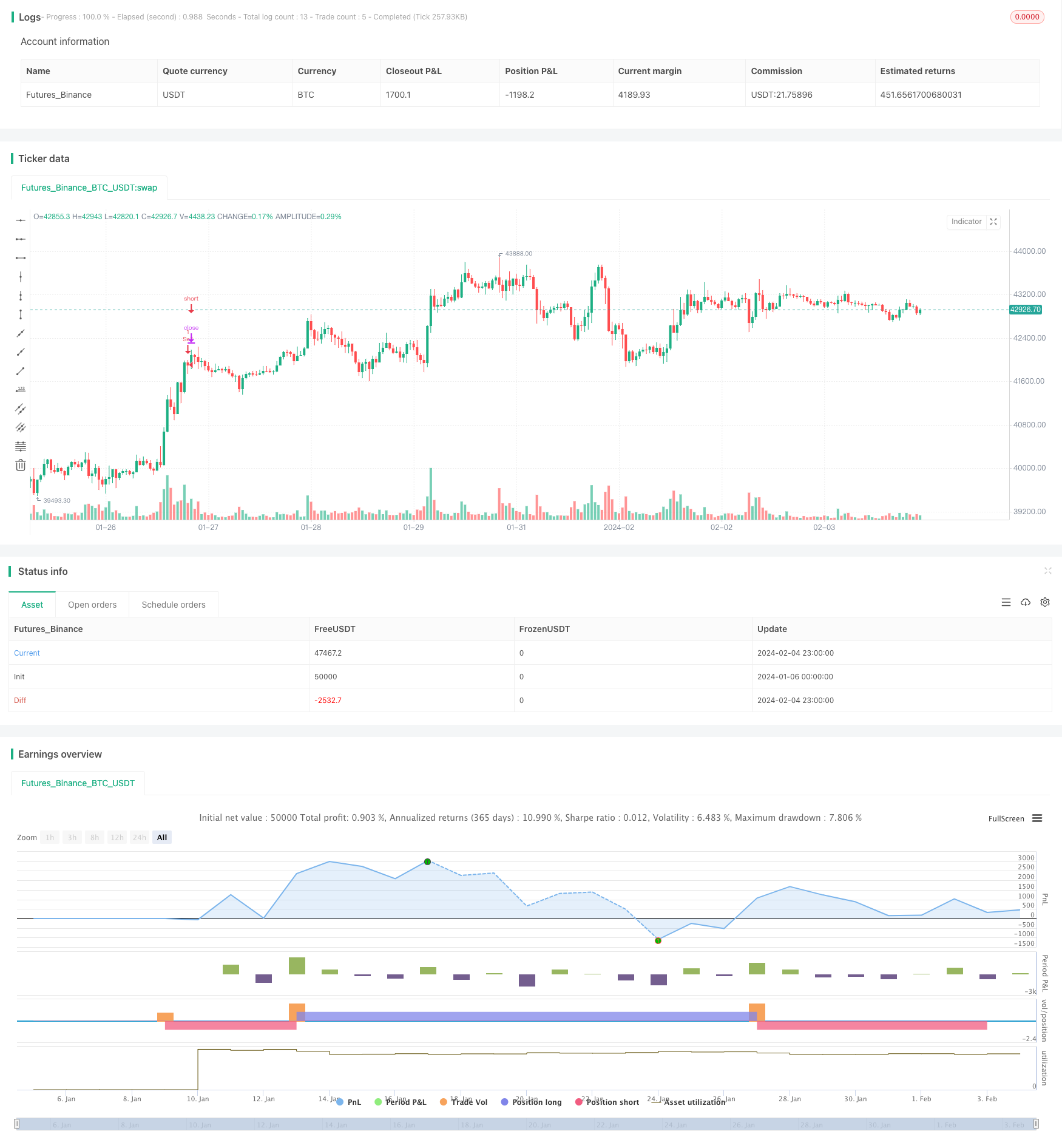
概述
本策略名称为Bollinger Bands和RSI双重确认策略。该策略通过计算布林带的上下轨,结合RSI的超买超卖信号,实现低买高卖的目的。
策略原理
该策略主要基于两个指标:布林带和RSI。
布林带包含上轨、中轨和下轨,通过计算一定周期内的均线及标准差构建。当价格接近上轨时为超买区,接近下轨时为超卖区。
RSI用于判断底部反弹和顶部回调的时机。RSI高于70为超买区,低于30为超卖区。
本策略的交易信号为:
- 买入信号:收盘价上穿下轨 + RSI低于30
- 卖出信号:收盘价下穿上轨 + RSI高于70
这样可以避免仅凭单一指标造成的假信号,实现更可靠的低买高卖策略。
优势分析
- 结合布林带和RSI两个指标,双重确认信号,避免假突破。
- 通过RSI判断超买超卖区,布林带判断突破位置,提高决策的准确性。
- parameterized布林带和RSI的参数,可以根据不同市场调整,适应性强。
- 实时监测价格与布林带的关系,不存在时间滞后问题。
- 实现低买高卖,跟踪市场趋势,盈利空间大。
风险分析
- 布林带标准差参数选取不当,可能导致信号过于频繁或少。
- RSI参数设定不当,可能错过最佳买入卖出时机。
- 信号产生频率较低,可能长时间无法开仓。
- 无法判断趋势,存在产生反向信号的风险。
风险解决:
- 优化布林带和RSI的参数,找到最佳参数组合。
- 结合其他指标判断趋势和信号质量。
- 适当调整仓位管理,控制单笔损失。
优化方向
- 结合移动平均线指标判断趋势方向,避免产生反向信号。
- 增加止损策略,如轨道止损,避免亏损扩大。
- 增加仓位管理机制,跟踪趋势加仓,锁定短线利润。
- 针对高频数据进行参数优化,提高信号品质。
- 引入机器学习模型判断信号质量,减少假信号。
总结
本策略通过布林带和RSI的双重验证机制实现低买高卖,降低假信号概率,避免错过最佳买入时机。同时参数化设计增加了策略的适应性和优化空间。但也存在一定的风险,需要进一步优化以提高稳定性。总体来说,该策略结合了趋势和超买超卖指标的优点,在参数优化和风险控制到位的情况下,具有不错的盈利空间。
策略源码
/*backtest
start: 2024-01-06 00:00:00
end: 2024-02-05 00:00:00
period: 1h
basePeriod: 15m
exchanges: [{"eid":"Futures_Binance","currency":"BTC_USDT"}]
*/
// This source code is subject to the terms of the Mozilla Public License 2.0 at https://mozilla.org/MPL/2.0/
// © samuelarbos
//@version=4
strategy("Estrategia de Bandas de Bollinger y RSI", overlay=true)
// Definimos los parámetros de las bandas de Bollinger
source = input(close, title="Precio base")
length = input(20, minval=1, title="Longitud")
mult = input(2.0, minval=0.001, maxval=50, title="Desviación estándar")
// Calculamos las bandas de Bollinger
basis = sma(source, length)
dev = mult * stdev(source, length)
upper = basis + dev
lower = basis - dev
// Definimos el RSI y sus parámetros
rsi_source = input(close, title="RSI Fuente")
rsi_length = input(14, minval=1, title="RSI Longitud")
rsi_overbought = input(70, minval=0, maxval=100, title="RSI Sobrecompra")
rsi_oversold = input(30, minval=0, maxval=100, title="RSI Sobrevendido")
// Calculamos el RSI
rsi = rsi(rsi_source, rsi_length)
// Definimos las señales de compra y venta
buy_signal = crossover(close, lower) and rsi < rsi_oversold
sell_signal = crossunder(close, upper) and rsi > rsi_overbought
// Compramos cuando se da la señal de compra
if (buy_signal)
strategy.entry("Buy", strategy.long)
// Vendemos cuando se da la señal de venta
if (sell_signal)
strategy.entry("Sell", strategy.short)